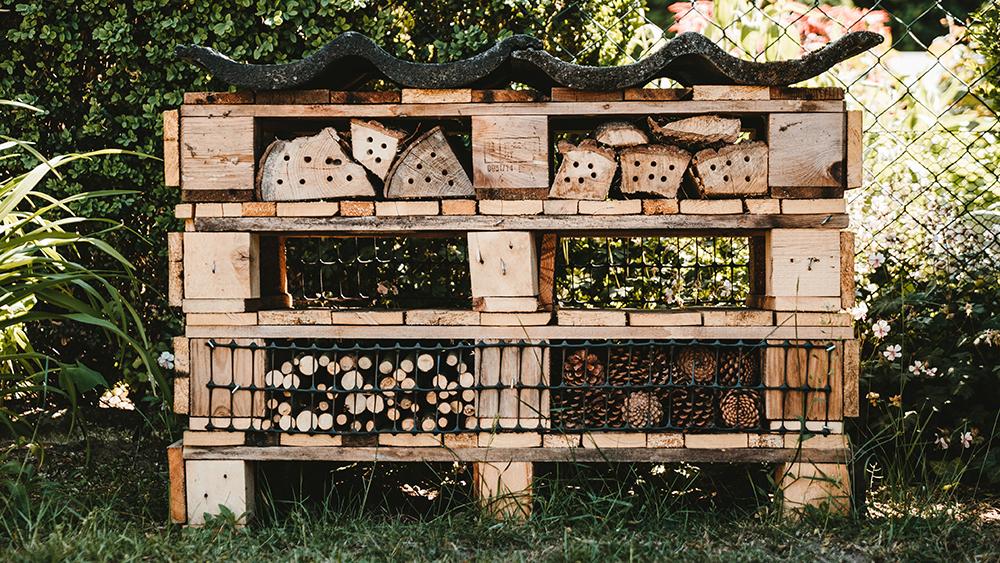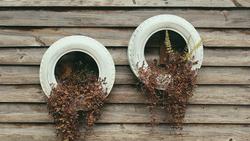Recycle, Reuse, Repurpose

Recycle, reuse, or repurpose is a sustainable hardscape mantra.
Hardscape is an aspect of your garden that gives you the license to use your creativity and support sustainability at the same time. Search for nontoxic, sustainable products to build the backbone of your garden. Survey your garden and look for recycling opportunities. Let your creative juices flow!
Bricks and stone: Bricks and pavers, old and new cobblestones, all can be used in walkways and garden edging.
Cement chunks can be used in patios and retaining walls, keeping them out of our landfills.
Don’t overlook the obvious boulder or mid-sized rock for an interesting placement in the garden with small flowers and succulents.

A barrel, wagon, sink or tub can become a container for tomatoes or flowers. Anything that can be set upright can be a support for a vine or plant.
Bathtubs, sinks, and buckets make excellent ponds when sunk into the ground. With a little care you can cultivate a rich ecosystem in your pond and attract frogs and toads that thrive on slugs and snails. Add some pond weed to keep the water clean. Old logs or pieces of wood will provide perches and help the frogs climb out.
Repurposed wood: Compost bins, cold frames, and structures to hold up netting can all be constructed from recycled, non-pressure treated wood.
Build a compost bin from pallets. Place four pallets on their edges for the sides, and bind together with strong garden wire twisted with pliers. Compost needs air which the gaps will allow to circulate.
Windows make great tops for home-made cold frames to protect tender plants from late autumn through to spring. Double-glazed windows offer more protection from frost and are usually sealed with good metal edges.
Chicken wire and fencing can be formed into an upright circle around a few repurposed posts set into the ground to create an ideal bin for leaf composting.
Plastic bottles can make a mini-cloche by cutting off their bottoms. Place the bottle over small seedlings to protect them from harsh winds, slugs, and snails. Leave the top off the bottle to allow air to circulate. Remove the bottle once the plants are touching the sides.
Small yogurt containers can be sunk into the ground and filled with beer or other yeasty liquid to trap and drown slugs.
Grapefruit skins and melon rinds make attractive overnight shelter for slugs and snails. Leaving a few inverted skins or rinds on the soil to attract them. In the morning, pick up the ‘shelter’ and dispose of the slugs.
Use minimally processed materials.
The ecological and human health impacts of materials typically increase with each additional manufacturing phase. Materials that have reduced manufacturing and processing requirements often pose fewer environmental and human health risks.
Minimally processed materials include: Uncut stone, earth materials, wood, and bamboo.
Locally sourced materials reduce negative environmental impacts and can create a sense of place.
Local resources for reclaimed materials:
Develop a list of vendors in your area. Common suppliers include recycling centers, salvage stores, Habitat for Humanity, and websites like freecycle.org or craigslist.
Urban Ore in Berkeley annually diverts 8,000 tons from the landfill, re-circulating resources into the local economy and community "To End the Wage of Waste."
